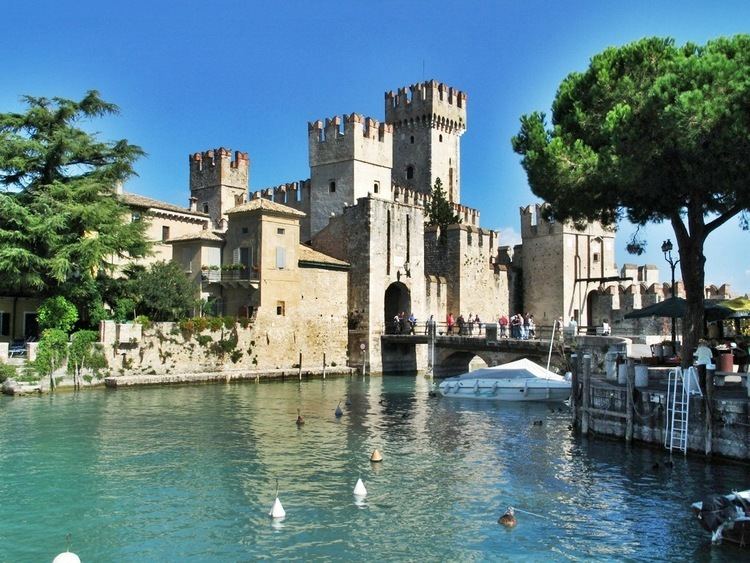Province / Metropolitan city Brescia (BS) Demonym(s) Sirmionesi Dialling code 030 | Elevation 68 m (223 ft) Area 33 km² Local time Thursday 1:47 AM | |
 | ||
Frazioni Colombare di Sirmione, Lugana, Rovizza Weather 12°C, Wind E at 5 km/h, 88% Humidity Points of interest Lake Garda, Castello Scaligero, Grottoes of Catullus, Castello scaligero di Sirmione, Spiaggia | ||
Places to see in sirmione italy
Sirmione is a comune in the province of Brescia, in Lombardy (northern Italy). It is bounded by the comunes of Desenzano del Garda (Lombardy) and Peschiera del Garda in the province of Verona and the region of Veneto. It has a historical centre which is located on the Sirmio peninsula that divides the lower part of Lake Garda.
Contents
- Places to see in sirmione italy
- Map of Sirmione Province of Brescia Italy
- Sirmione lake garda italy
- History
- Main sights
- World heritage site
- Municipal government
- Notable people
- References
Map of Sirmione, Province of Brescia, Italy
Sirmione lake garda italy
History
The first traces of human presence in the area of Sirmione dates from the 6th-5th millennia BC. Settlements on palafitte existed in the 3rd and 2nd millennia BC.
Starting from the 1st century BC, the area of the Garda, including what is now Sirmione, became a favourite resort for rich families coming from Verona, then the main Roman city in north-eastern Italy. The poet Catullus praised the beauties of the city and spoke of a villa he had in the area.
In the late Roman era (4th-5th centuries AD) the city became a fortified strongpoint defending the southern shore of the lake. A settlement existed also after the Lombard conquest of northern Italy: in the late years of the Lombard kingdom, the city was capital of a judiciary district directly subordinated to the king. Ansa, wife of King Desiderius, founded a monastery and a church in the city.
Around the year 1000 Sirmione was probably a free comune, but fell in the hands of the Scaliger in the early 13th century. Mastino I della Scala was probably the founder of the castle. In the same period Sirmione was refuge for Patarines hereticals. The military role of the city continued until the 16th century, but a garrison remained in the castle until the 19th century.
Sirmione was a possession of the Republic of Venice from 1405 until 1797, when it was acquired by the Habsburg Empire. It became part of the Kingdom of Italy in 1860.
Main sights
The main historical landmark of Sirmione is the so-called Grottoes of Catullus (Grotte di Catullo), the most striking example of a Roman private edifice discovered in northern Italy. The edifice had a rectangular plan and measured 167 x 105 m. The town is famous for its thermal springs.
Other sights include:
World heritage site
The prehistoric settlement at Lugana Vecchia is part of the Prehistoric Pile dwellings around the Alps a UNESCO World Heritage Site.
Municipal government
Sirmione is headed by a mayor (sindaco) assisted by a legislative body, the consiglio comunale, and an executive body, the giunta comunale. Since 1995 the mayor and members of the consiglio comunale are directly elected together by resident citizens, while from 1945 to 1995 the mayor was chosen by the legislative body. The giunta comunale is chaired by the mayor, who appoints others members, called assessori. The offices of the comune are housed in a building usually called the municipio or palazzo comunale.
Since 1995 the mayor of Sirmione is directly elected by citizens every five years. The current mayor is Alessandro Mattinzoli (FI), elected on 7 June 2009 and re-elected on 25 May 2014.
This is a timeline of the direct-elected mayors of Sirmione since 1995:
Left-wing; Right-wing
